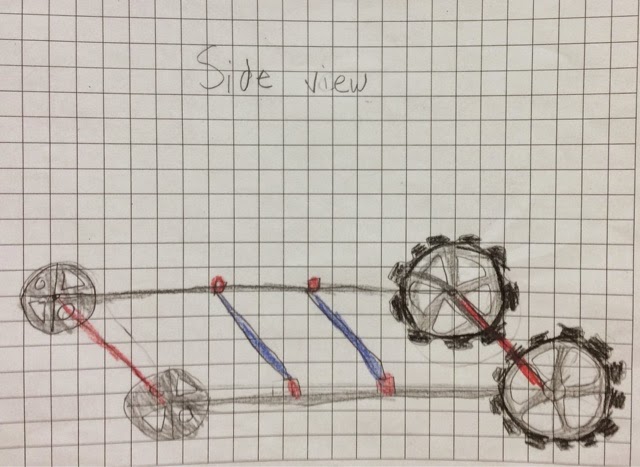Proportion in Art and Design--turning STEM into STEAM
The mechanical drawings we did in fourth grade at Middletown Village as an integrated art and science lesson got my wheels turning, pardon the pun. In what other ways does visual art relate to or enhance learning in science and math?
The push for STEM education (science, technology, engineering, and math) should include art as well, which would not just change the acronym to the more active, energetic word STEAM, but would then include mechanical drawing and scaled drawing, science and math concepts illustrated in the form of graphs and charts, model design to solve physics and engineering problems in a three dimensional format, and anatomical drawing, for example. The applications for art in the STEM disciplines are infinite.
I am slightly obsessed with STEAM! A great place to start if you are interested in STEAM is www.stemtosteam.org.
Our next lesson applied much of what we learned in our mechanical drawing, but in a new way. We started with figure drawing, posing for each other and quickly sketching the poses. This sparked a discussion about the proportions of the human body, which turned out to be a similar conversation to the one we had about the relationships between the parts of the cars we drew, also called proportion.
Keith Haring created graffiti and 80s video game inspired art using dynamic figures and implied motion. He is best known for his dancing people, glowing babies, and people with dog heads, all painted bright neon colors. We used his artwork as inspiration for our figure drawing artwork.
Check out his work at www.haringkids.com.

I love the variety of poses these 4th graders used in their final projects, and the ways the figures interact with each other!
This project relates to to science, math, and engineering by introducing students to proportion--drawing proportions of the human body ca help students to apply the concept of proportion in the STEM disciplines as well.
They are having a ton of fun working on these drawings, while using
what they learned about proportions of the human figure.









Comments
Post a Comment